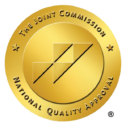The opioid epidemic in Charleston, South Carolina has been a growing problem in recent years, with rates of opioid overdose deaths on the rise. According to the South Carolina Department of Alcohol and Other Drug Abuse Services (DAODAS), there were 109 opioid overdose deaths in Charleston County in 2019, representing a 45% increase from the previous year. This statistic is part of a larger trend across the state, as South Carolina has experienced a significant increase in opioid-related deaths over the past decade. This is one of Lantana Recovery’s biggest motivations to provide the best quality drug rehab program in Charleston that is humanly possible!
Despite efforts to combat the epidemic, the problem continues to impact communities throughout Charleston. By examining the statistics and data related to opioid use and overdose rates in the area, we can gain a better understanding of the crisis and work towards effective solutions to address it.
Prevalence of Opioid Use in Charleston
Understanding the prevalence of opioid use in Charleston is a key step in addressing the opioid epidemic. In 2019, Charleston County had a rate of 29.2 opioid overdose deaths per 100,000 people, which is higher than the state average of 21.8 deaths per 100,000 people. This indicates that Charleston has been disproportionately affected by the opioid crisis, and highlights the need for targeted intervention and support in the area.
Examining trends in opioid use and addiction in Charleston over the past decade can also provide valuable insight into the current state of the epidemic. Between 2010 and 2018, opioid overdose deaths in Charleston County increased by 250%, with the largest increase occurring between 2013 and 2017. This trend is reflective of a larger pattern of opioid-related deaths across the United States, but the specific factors contributing to the problem in Charleston require a localized approach to intervention and prevention.

Contributing Factors to the Epidemic
One of the key factors contributing to the opioid epidemic in Charleston is the overprescription of opioids. In 2019, Charleston County had a prescription rate of 63.6 opioid prescriptions per 100 people, which is higher than the state average of 58.9 prescriptions per 100 people. This suggests that opioids are being prescribed at a higher rate in Charleston than in other areas of South Carolina, potentially contributing to the high rates of opioid addiction and overdose in the area.
Another contributing factor to the opioid epidemic in Charleston is the availability of illicit opioids, such as fentanyl and heroin. According to the DAODAS, fentanyl was present in 47% of all opioid-related deaths in Charleston County in 2019, highlighting the prevalence of the drug in the area. Additionally, Charleston has been identified as a major drug trafficking hub, with a high prevalence of fentanyl-laced heroin in the area. The availability of illicit opioids can make it more difficult for individuals struggling with addiction to overcome their dependence, further contributing to the problem.
Impact on Charleston’s Communities
Efforts to combat the opioid epidemic in Charleston are multifaceted and require a coordinated approach. One important strategy is increasing access to medication-assisted treatment (MAT), which combines medication with behavioral therapy to provide a comprehensive approach to opioid addiction treatment. MAT has been shown to improve treatment outcomes and reduce the risk of relapse among individuals struggling with opioid addiction. And make no mistake, alcohol rehab programs in Charleston also play a huge part to the betterment.
Another important approach is increasing access to harm reduction services, such as naloxone distribution and syringe exchange programs. Naloxone is a medication that can reverse the effects of an opioid overdose and has been credited with saving countless lives. Syringe exchange programs provide individuals who use drugs with sterile injection equipment, reducing the risk of infectious diseases and other negative health outcomes. By implementing these harm reduction strategies, individuals who use drugs can be better supported and connected to resources for addiction treatment.
Solutions and Next Steps for Charleston’s Opioid Epidemic
In addition to these strategies, it is important to address the underlying factors that contribute to opioid addiction in Charleston. This includes addressing social determinants of health, such as poverty, lack of access to healthcare, and social isolation. By providing individuals with access to stable housing, employment opportunities, and supportive social networks, they can better manage their addiction and reduce the risk of relapse.
Another important approach is destigmatizing addiction and increasing awareness about the risks of opioid use. This can be achieved through education campaigns and community outreach programs that aim to reduce the shame and stigma associated with addiction. By increasing understanding and empathy for individuals struggling with addiction, we can create a more supportive and compassionate environment for those in need of help.
Overall, addressing the opioid epidemic in Charleston requires a multi-pronged approach that involves increased access to addiction treatment, harm reduction services, addressing social determinants of health, and reducing the stigma associated with addiction. By working together, we can make progress in reducing the harm caused by opioids in our community.

Bottom Line: Opioid Epidemic in Charleston
The opioid epidemic continues to have a devastating impact on individuals, families, and communities in Charleston. However, there are effective strategies that can be implemented to combat this crisis. Increasing access to addiction treatment, harm reduction services, and addressing the underlying social determinants of health that contribute to addiction are all critical components of a comprehensive approach to addressing the opioid epidemic. Additionally, reducing the stigma associated with addiction and increasing awareness about the risks of opioid use can help to create a more supportive and understanding environment for those struggling with addiction. By working together and implementing evidence-based strategies, we can make progress in reducing the harm caused by opioids in our community.





